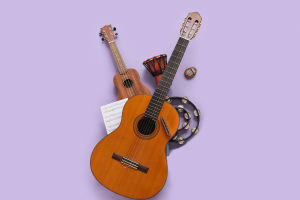Each professional pianist uses their hands uniquely while playing. Comparing a few accomplished players reveals that there isn’t a single “correct” hand position.
This variation stems from the individuality of each pianist’s technique and the dynamic demands of different pieces.
Dear Lykkers! For example, many professionals adopt a well-rounded hand shape for Mozart but use flattened fingers for certain passages in Debussy or Chopin.
The deeper challenge lies in the diversity of technical approaches. Piano pedagogy is far from uniform, with each teacher passing on a unique mix of inherited and self-developed methods. This, combined with individual hand physiologies, means what works well for one pianist may feel awkward for another.
The internet has revolutionized piano learning, offering countless resources on techniques and methods. However, the sheer volume of information can be overwhelming, making it difficult for students to discern what is effective and safe for them.
Physiology, Efficiency, and Safety in Piano Playing
Bad habits in piano playing not only hinder progress but can lead to long-term health issues. Even pianists who perform brilliantly may unknowingly adopt techniques that are unsafe over time. Modern research, such as the Taubman Approach or Laurent Boullet’s work, emphasizes evaluating techniques not just for results but for long-term safety.
Despite the importance of safe playing techniques, many conservatories still lack dedicated courses on piano physiology. Students often rely on their instructors for guidance, but not all teachers are equipped with the latest knowledge on safe practices. As a result, students may struggle with technical limitations or health issues, often misattributed to a lack of talent.
Understanding Tension and Freedom in Piano Playing
Efficient piano technique revolves around managing tension and release. Playing the piano involves multiple body parts, including fingers, hands, arms, and shoulders. Imbalances in tension can create inefficiencies. While some tension is necessary to produce sound, it should be brief and well-distributed to avoid fatigue or injury.
Freedom in piano playing refers to a tension-free yet focused state where body parts move flexibly and perform tasks efficiently. This dynamic balance between active and passive states is essential for mastering piano techniques.
Bench Height and Body Posture
Before addressing hand position, ensure the bench height is correct. Your forearms should be parallel to the floor, with elbows level or slightly higher than the keyboard. If the bench height is non-adjustable, consider using pillows or an adjustable piano stool for optimal posture.
Sit upright but comfortably, with your elbows slightly in front of your torso. Position yourself near the bench's front edge for mobility and stability. Ensure your feet touch the floor fully; this enhances coordination and stability. Children or shorter players can use footrests for added support.
Functions of Different Body Parts in Piano Playing
Efficient piano playing involves the entire body working in harmony:
Feet and Seat: Provide stability and serve as a fulcrum. Proper posture and full contact with the floor are crucial.
Torso: Facilitates movement and weight distribution for reaching distant keys or playing loud chords. Lean slightly forward for better efficiency.
Shoulders and Neck: Relaxed shoulders and neck ensure freedom of arm movement and prevent medical issues.
Arms and Forearms: Provide weight for producing sound, reducing reliance on finger muscles and preventing overuse injuries.
Elbows and Wrists: Work together to maintain flexibility and allow smooth transitions between playing positions.


